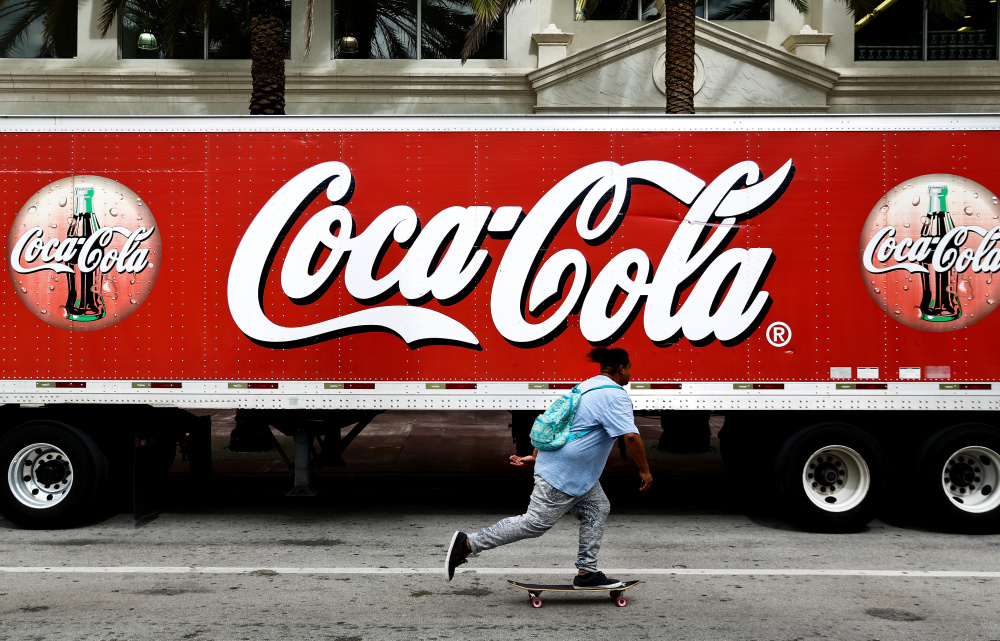As Coca-Cola CEO James Quincey settles into his new job, he’s facing a challenge that most of his predecessors never worried about: digital disruption.
Consumers are increasingly shopping online, spending more time on mobile apps, and getting groceries delivered to their homes. And that’s hitting Coca-Cola in ways you might not expect, Quincey said in an interview from his office in Atlanta.
When shoppers skip trips to the local mall and get their clothes at Amazon, they also forgo buying Coke at a vending machine or food court. So while the decline of retailers has mostly focused on bankrupt apparel chains and shuttered storefronts, a brand like Coca-Cola is suffering as well.
“Digital is changing the way you behave,” he said. “It affects other categories that are not the primary reason you thought about making the shopping trip.”
Turning Coke into a winner of the digital age – rather than another brick-and-mortar victim – is a key priority for Quincey.
The technological challenges faced by the 52-year-old, who took the reins from Muhtar Kent on May 1, are compounded by a backlash against sugary beverages. The upheaval has led the soda giant to invest in new brands such as Suja Life and Aloe Gloe, which appeal to health-conscious consumers. Quincey also is slashing expenses and offloading large swaths of its bottling plants around the world in a bid to re-emerge as a leaner, more focused operation.
As its sales slip, Coca-Cola has seen its stock decline 4.9 percent in the past year. That compares with a 15 percent gain for the Standard & Poor’s 500 Index.
But technology is a main focus for Quincey, an Englishman who has spent more than two decades at Coca-Cola. He wants to modernize the 131-year-old company and brags that there’s hardly any paper in his pristine office. (Glancing over at a lone document sitting on a cabinet, Quincey apologizes that one piece “crept in.”)
The self-proclaimed techie drives a Tesla and uses a standing desk. Quincey, who is fluent in Spanish, likes to put his calls on speakerphone and paces around the room while he talks.
The disruptive power of tech has been especially pronounced in some overseas markets, including China. When Quincey was chief operating officer in early 2016, he saw sales in that country slump – hurt by a decline in sales to noodle shops and other restaurants.
The shops themselves weren’t the problem – they were still selling large quantities of food – but more customers were ordering online and having their meals delivered. The problem for Coca-Cola: The restaurants offered glass bottles and sizes that weren’t suited to being transported via scooter.
“Unless you’re adapting to the secondary effect, you can find – all of a sudden – weird and surprising changes happening to you,” Quincey said.
At the same time, technology is helping Coke cut its own costs.
For one, the company is no longer building customized software to run things like human resources and bill payment, relying instead on cheaper ready-made systems.
Tech advancements also have made some jobs at Coca-Cola obsolete. The company is currently cutting 1,200 positions, in part because it’s spinning off bottling plants.
Send questions/comments to the editors.



Success. Please wait for the page to reload. If the page does not reload within 5 seconds, please refresh the page.
Enter your email and password to access comments.
Hi, to comment on stories you must . This profile is in addition to your subscription and website login.
Already have a commenting profile? .
Invalid username/password.
Please check your email to confirm and complete your registration.
Only subscribers are eligible to post comments. Please subscribe or login first for digital access. Here’s why.
Use the form below to reset your password. When you've submitted your account email, we will send an email with a reset code.